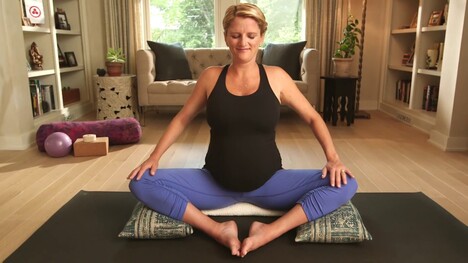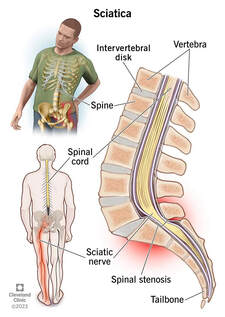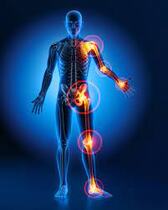Spinning Babies provides a variety of resources and tools to assist individuals throughout their pregnancy experience. These include online classes, workshops, and webinars covering topics such as fetal positioning, pregnancy comfort, and the role of the pelvis in labor. We highly recommend exploring their website for additional details.
The Spinning Babies method operates on the premise that optimal fetal positioning can be influenced by factors such as maternal posture, fetal movements, and pelvic alignment. Through a combination of education, exercises, and bodywork, this approach seeks to enhance outcomes for both mothers and babies. Our pregnancy chiropractic care incorporates the Webster Technique. This involves comprehensive biomechanical assessments, particularly focusing on the spine and pelvis. We consider maternal and fetal positioning, provide gentle chiropractic adjustments to support pelvic alignment, and offer guidance on at-home exercises and stretches. Pregnant individuals with breech pregnancies are encouraged to access Spinning Babies resources and support in addition to their chiropractic care and traditional OBGYN assistance. This dual approach aims to empower patients with knowledge throughout their pregnancy and birth journey, enabling them to actively participate in optimizing their baby's position for birth. In summary, Spinning Babies offers a comprehensive approach to optimal fetal positioning, providing a range of resources and education to support pregnant individuals. Through the integration of chiropractic care with the Spinning Babies approach and traditional OBGYN support, our goal is to help patients achieve the best possible outcomes for a safe and comfortable birth.
Once pregnant
After the initial shock and subsequent excitement of discovering pregnancy, a woman will observe numerous changes in her body. Alongside alterations affecting her moods, eating habits, and physique, there will be shifts in her biomechanics—how her body moves and functions. The growing fetus's added weight exerts an increasing load on the lumbar spine and pelvis, leading to an accentuation of the lumbar curve. This results in heightened stress on the ligaments of the spine and pelvis, with muscles experiencing fatigue more readily. Throughout pregnancy, the release of the hormone relaxin, which readies ligaments for childbirth, can induce instability, particularly in the pelvis. These spinal stresses often contribute to the onset of low back pain and sciatica, especially if there was an underlying issue before pregnancy. Research indicates that up to half of women may experience back pain during pregnancy. A chiropractor is the ideal professional to assist women during this period, not only alleviating back pain but also ensuring overall body function is optimized for childbirth. Many women attest that seeking chiropractic care during pregnancy not only enhances comfort and health but also contributes to a smoother birth experience. The Birth Process It's understandable that even a natural, healthy birth can subject the newborn's spine to considerable pressure. The journey through the birth canal presents numerous opportunities for the development of spinal dysfunction, known as vertebral subluxation, particularly if the delivery involves pulling or twisting. This subluxation can cause discomfort and distress for the baby, potentially leading to issues like constipation or colic. Occasionally, a subluxation in the newborn's neck may result in discomfort during feeding, limited head movement, or general fussiness. A chiropractor can gently adjust the baby's spine to restore normal function and mobility, benefiting the nervous system and facilitating the body to function as designed. Postpartum Breastfeeding is crucial for the baby's health. Mothers may overlook that this is a new task for them, and it's easy to strain their arms, neck, and back. Therefore, assuming the correct position with proper support is paramount. Ensuring relaxed hands and proper baby support is essential. Several considerations arise for the mother during this exhilarating period, including lifting and carrying the baby correctly, especially as the baby gains weight. Engaging in appropriate exercises is vital for the mother's return to good health. Seeking advice from a local chiropractor is recommended. Optimal Health, Naturally Chiropractors often emphasize that a mother's health throughout her pregnancy and afterward is twice as crucial as it is normally, as her well-being directly impacts the growing baby's health. Chiropractic care is highly recommended as a means to attain and sustain good health before, during, and after pregnancy.
Why is chiropractic care beneficial for children?
The initial year of a child's life is crucial, marked by various developmental stages from birth and breastfeeding to rolling over, crawling, and eventually walking. Ensuring proper spinal alignment is essential for children to achieve their milestones on time, if not earlier, amidst these transformations. In our practice, we often encounter infants facing challenges like latching difficulties, sleep issues, sluggish bowel movements, reflux, or torticollis. Additionally, many parents bring in their children for wellness visits to monitor their progress, even when no specific complaints are present. The International Chiropractic Paediatric Association conducted a groundbreaking study affirming the safety and effectiveness of chiropractic care for children. Preliminary results are remarkable, indicating that chiropractic care not only is safe but also leads to three unexpected improvements reported by parents:
A paediatric session typically begins with a comprehensive consultation covering medical history, challenges, diet, and physical activity. Nutritional aspects are also discussed, as they play a crucial role in a child's well-being. The examination phase includes assessments such as primitive reflexes and, depending on the child's age, gait analysis. Corrective and strengthening exercises tailored to address muscular imbalances are introduced, with parents assigned follow-up activities at home. The adjustment phase involves gentle techniques like Craniosacral Therapy, Logan Technique, and Activator. Is paediatric chiropractic care painful? No, paediatric chiropractic care is gentle, with the pressure applied being equivalent to the touch of an avocado at a grocery store. How long is a session? After the initial visit, follow-up appointments typically range from 10 to 15 minutes.
As the sciatic nerve spans a significant portion of the lower body, pain concentrated in this area may be indicative of sciatica. At Nandish, we will conduct a thorough full-body assessment to pinpoint the precise cause of your pain before devising a tailored solution program.
Individuals who may encounter sciatica include:
Chiropractic services for sciatica treatment are accessible to almost anyone due to their gentle, safe, and natural nature. Chiropractors possess a comprehensive understanding of the musculoskeletal system, enabling them to design treatment plans tailored to each patient's unique needs. Various evidence-based chiropractic services are available, ensuring patient comfort and confidence throughout the process. Common chiropractic techniques to address sciatica include:
Osteoarthritis:
The most prevalent form of arthritis, osteoarthritis, stands as the primary contributor to joint pain. It occurs when the cartilage at the ends of bones gradually erodes. While this can affect any joint, it is most commonly observed in the fingers, thumbs, neck, elbows, lower back, hips, knees, and big toes. Osteoarthritis manifests with varying severity, ranging from mild to severe. Common symptoms encompass joint inflammation, pain, and stiffness. Physical activity often exacerbates these symptoms, leading to joint swelling, reduced range of motion, and muscle weakness. Rheumatoid Arthritis: As the second most prevalent arthritis type, rheumatoid arthritis is an autoimmune disease characterized by the body's immune system attacking the joint linings, resulting in inflammation and joint damage. This condition typically targets smaller joints like those in the hands, feet, and wrists, with the severity determining potential impact on larger joints such as the knees and hips. Symptoms include throbbing or aching pain, often more pronounced in the morning or after prolonged sitting, as well as morning joint stiffness and inflammation leading to swelling, heat, and tenderness upon touch. Injury/Trauma: Joint wear and tear due to physical injury constitute this category. Such injuries can stem from sports, car accidents, falls, or any form of physical trauma, causing damage to cartilage and/or bone. These injuries alter joint mechanics, accelerating the wear-and-tear process, with subsequent injuries further hastening joint deterioration. Common symptoms include joint pain, swelling, stiffness, and a limited range of motion. Can Chiropractic care alleviate joint pain? Chiropractic care is recognized as a secure practice focused on optimizing joint function, thereby facilitating improved movement with reduced pain. Chiropractic adjustments target the realignment of the spine and enhancement of the nervous system's function to achieve the following:
|
|
Shop 2 Meadowlands Shopping Plaza,
112 Whitford Road, Somerville, Auckland 2014 info@nandishchiropractic.com |





